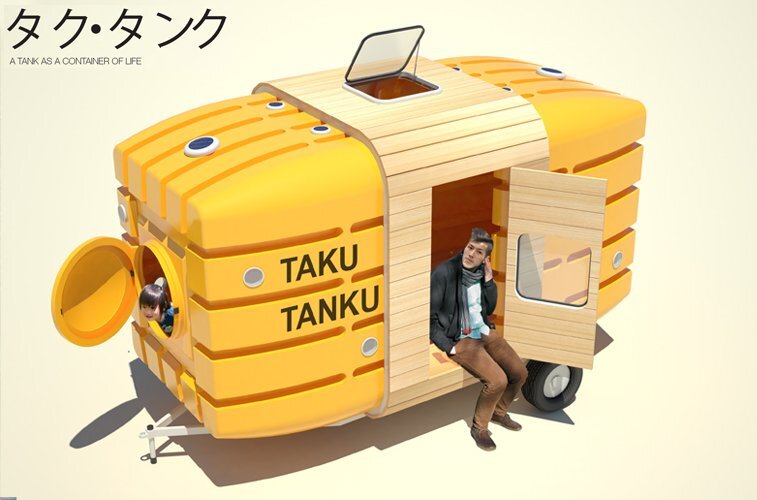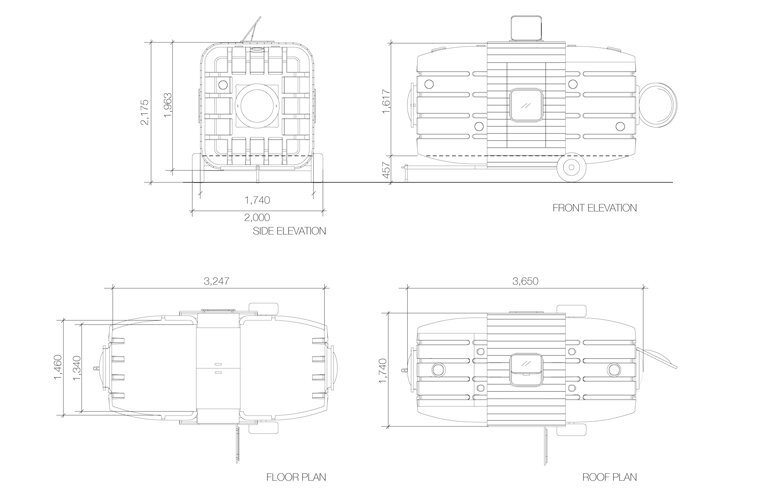Aug 29, 2014 • Spaces
Taku-Tanku is a Tiny House Made of Water Tanks

Taku-Tanku is a tiny portable dwelling built mainly from two 3,000 liter water tanks. The micro-house has been designed by the New York-based design studio, Stereotank and Japanese designer Takahiro Fukada. Stereotank have completed a number of experimental pieces in the past using water tanks, but this is their first attempt at incorporating them into a “little house”.

The Taku-Tanku is a lightweight structure allowing it to be pulled by bike, or car (or perhaps even a person as some of their diagrams suggest). Being made mostly from water tanks supported by a small single axle trailer, it can also float. The two water tanks are connected to a central component, a cobia wood structure that provides access to the tiny house.

Despite its small size, there’s room enough for two or three people on the inside. Although, you won’t find any bathroom, or cooking facilities. They have managed to include a small storage section underneath the cypress wood flooring, and it also features LED lighting, and fans powered by a small solar panel. During the day, lighting is provided by its several “hatches” and windows, which can also be opened to allow for ventilation.

The Taku-Tanku design was developed as a competition entry. Intended to be eco-friendly and constructed from commonly available materials, perhaps it could be used as a transitional shelter, although it seems more likely to be used as a camper. According to its designers the Taku-Tanku is “a sculpture that celebrates the vital role of water in our lives.”

For more spaces check out Sleep Box, mobile hotel rooms which are being used in airports across the world. Or, this man’s home office which is likely to make you green with envy. See all spaces.
Via Inhabitat
Photos: StereoTank
Join Our Newsletter And
Get 20% Off Plans
Get the latest tiny house news, exclusive
offers and discounts straight to your inbox



